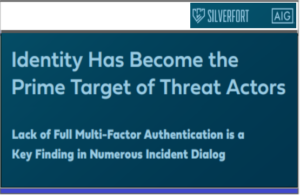Source: securityboulevard.com – Author: Victor Singh
Introduction
Let’s be honest — passwords are a pain. They’re either too simple and easy to guess, or so complicated you forget them right after making them. And even if you get it right, there’s always that worry about hackers or scammy websites trying to steal them.
That’s why passkeys are starting to show up everywhere. A passkey lets you log into apps and websites without a password. You just use your phone’s fingerprint scanner, face unlock, or a simple PIN — and boom, you’re in.
Big companies like Apple, Google, and Microsoft are already switching to passkeys because they’re:
- Safer — there’s no password for hackers to grab.
- Phishing-proof — fake sites can’t trick you into handing over your passkey.
- Way easier — no more memorizing weird passwords or dealing with those annoying reset emails.
In this blog, we’ll explain how passkeys work in super simple terms — no techy talk, no complicated stuff. Just a clear, easy guide to help you understand why passkeys are the future.
Sound good? Let’s get started.
What is Public Key Cryptography? (In Simple Terms)
Alright, let’s keep this super simple. You’ve probably heard of the term encryption before — like when people say your messages are “end-to-end encrypted.” That’s basically scrambling information so only the right person can unscramble it. Public key cryptography is one of the coolest ways to do that, and it’s a huge part of how passkeys work.
Think of it like this: imagine you have a special locked mailbox at your house. Anyone can drop letters into it, but only you have the key to open it and read what’s inside. That’s kind of how public key cryptography works.
There are two keys involved:
- A public key — this is like the open slot in your mailbox. Anyone can use it to “lock” (or encrypt) a message for you.
- A private key — this is your personal key to open that mailbox and read what people sent.
When you sign in with a passkey, your phone or computer holds onto your private key. It never shares it with anyone. The website or app you’re logging into has your public key, and it uses that to check that you’re really you.
The best part? Because you never have to hand over your private key, there’s nothing for hackers to steal. Even if someone tricks you into visiting a fake website, your device won’t hand over that private key — keeping you safe from phishing scams and other shady stuff.
In short:
Public key cryptography is a fancy name for a super clever lock-and-key system that keeps your stuff private, without needing a password. Passkeys use this behind the scenes to make logins safer and way less annoying.
Device-Based Identity: Turning Your Device into Your Key
Okay, so we just talked about public and private keys. Now let’s get into where those keys actually live — and this is where your device comes in.
When you use a passkey, your phone, laptop, tablet, or even a hardware security key (like a tiny USB stick) becomes your personal vault. It safely stores your private key — the secret part of the lock-and-key setup we mentioned earlier.
Here’s the cool part:
You don’t even have to remember this key. You unlock it the same way you already unlock your phone or laptop — with your fingerprint, face scan, or PIN. So instead of typing a password, you just tap your finger or look at your screen, and your device quietly does all the nerdy cryptography stuff in the background.
The private key never leaves your device. Ever. Not sent to a website. Not stored on some sketchy server in the cloud. It stays with you.
Now you might be thinking, “What if I want to log in on a different device?” Good question. That’s where things like Bluetooth or QR codes come in. For example, if you’re signing into a site on your laptop but your passkey is on your phone, your phone and laptop can have a quick little chat over Bluetooth to make sure it’s really you. Or you scan a QR code, confirm with your fingerprint, and you’re in.
Some platforms, like Apple’s iCloud Keychain or Google Password Manager, can sync your passkeys across your devices too — safely encrypted, of course. So if you get a new phone, you’re not locked out of your accounts.
In short: your device holds the key to your digital identity, and passkeys make it super easy to prove who you are without juggling passwords or security codes.
The Role of FIDO2 and WebAuthn
Alright — now you might be wondering, “Okay, but how does my phone actually talk to a website to log me in with a passkey?” That’s where two important names come in: FIDO2 and WebAuthn. Don’t worry, they sound scarier than they actually are.
Let’s break it down.
FIDO2 is basically a set of rules that makes passkeys work. Think of it like the official playbook for passwordless logins. It makes sure that your device, your private key, and the website you’re logging into all speak the same language and follow the same safety rules.
Now, one part of FIDO2 is called WebAuthn — short for Web Authentication API. This is the bit built into your browser (like Chrome, Safari, Edge, or Firefox) that actually handles the passkey login process. It helps your browser securely ask your device, “Hey, can you prove this is really Vijay trying to log in?”
When you try to sign in:
- The website says, “I need proof this is you.”
- WebAuthn kicks in and asks your device for a signature using your private key.
- You unlock your phone with your face or fingerprint.
- Your device signs a little digital message with your private key.
- The website checks that signature against your public key, which it already has from when you first set up your passkey.
- If it matches, you’re in.
The best part?
Your private key never leaves your device during any of this. And since your device is the only one that has it, no one else can pretend to be you — not even if they have your email or trick you with a fake login page.
So to sum it up:
FIDO2 sets the rules, WebAuthn makes your browser follow those rules, and together they let you log in safely using passkeys without passwords.
How a Passkey Login Actually Works (Step by Step)
Alright, so we’ve talked about keys, devices, and the tech behind the scenes. Now let’s walk through what actually happens when you log in using a passkey. Spoiler: it’s way simpler than passwords, even though there’s some serious magic going on in the background.

Here’s what happens, step by step:
Step 1: You Hit “Sign In”
You go to a website or open an app and tap on the “Sign in with a passkey” button instead of typing a password. Easy.
Step 2: Your Device Gets a Ping
The website sends a quick message to your device saying, “Hey, can you prove this is really you?”
If you’re on your phone, it talks to your built-in passkey system (like iCloud Keychain on iPhone or Google Password Manager on Android).
If you’re on a computer and your passkey’s on your phone, you might scan a QR code or connect via Bluetooth.
Step 3: You Unlock Your Private Key
Your device asks you to confirm it’s you. This could be a fingerprint, face scan, or a PIN — however you normally unlock your phone or laptop.
Step 4: Your Device Signs a Secure Message
Once you confirm, your device uses your private key to sign a tiny, one-time digital message for the website. It’s like scribbling your signature on a receipt, but digitally.
Important part? Your private key never leaves your device. The website never sees it. It only gets that signed message.
Step 5: The Website Verifies It
The website uses your public key (which it saved when you created your passkey) to check if that signature is legit.
If it matches, it means you’re the real deal.
Step 6: You’re In
And that’s it. No password. No SMS codes. No security questions about your first pet’s name.
Why Passkeys Are Safer and Better
Okay, so you’re probably wondering — beyond the cool tech and no-password login, why should anyone care about passkeys? What actually makes them better than regular passwords or those clunky 6-digit text codes?
Let’s break it down.
No Passwords = No Password Leaks
With passkeys, there’s literally no password to steal. Hackers can’t guess it, leak it, or buy it off the dark web because it doesn’t exist.
Your private key stays locked inside your device and never gets sent over the internet.
Phishing Can’t Fool You
Ever clicked a fake login link by mistake? Happens to the best of us.
The good news is, passkeys don’t fall for that. Your device won’t even offer up your passkey on a sketchy or lookalike site because it’s tied to the exact website where you set it up. No match, no login.
Tied to You and Your Device
Unlike a password you can type into any browser on any computer, passkeys stay with your device. And you can only unlock them with your fingerprint, face, or PIN.
Even if someone steals your laptop or phone, they’d still need your face or fingerprint to get in.
Works Across Devices (Without Being Annoying)
Modern passkey systems are designed to sync safely between your devices.
So if you get a new phone, your passkeys come along — securely encrypted in something like Apple’s iCloud Keychain or Google Password Manager. No need to reset logins or dig up recovery emails.
It’s Just… Less of a Hassle
Let’s be honest — nobody likes remembering passwords, changing them every three months, or dealing with 2FA codes that show up late. Passkeys skip all that nonsense.
A quick fingerprint tap or face scan and you’re done.
How to Use Passkeys Today
Okay, so passkeys sound cool — but can you actually use them right now? Good news: yes, you can. In fact, some of the biggest tech companies have already rolled them out, and it’s surprisingly simple to get started.
Here’s a quick look at where you can try passkeys today:
1. Apple Devices (iPhone, iPad, Mac)
If you’ve got an iPhone running iOS 16 or later, or a Mac with macOS Ventura or newer, you’re good to go.
Your iCloud Keychain handles passkeys, and it syncs them across your Apple devices.
You can save passkeys when a site offers it and log in using Face ID, Touch ID, or your device passcode.
Where to find it:
Go to Settings → Passwords → Passkeys and check out what’s there.
2. Android Phones
On Android 9 and up, Google Password Manager can manage passkeys for you.
It works the same way — you log in with your fingerprint, face, or PIN instead of a password.
Where to find it:
Head to Settings → Google → Password Manager on your phone.Windows PCs
If you’re on Windows 10 or 11 and using Microsoft Edge or Chrome, you can store passkeys using Windows Hello.
That means signing in with a fingerprint, face recognition, or a PIN linked to your device.
3. Websites & Apps Supporting Passkeys
Right now, companies like Google, Microsoft, PayPal, eBay, and Best Buy already support passkeys for login.
You’ll usually see an option like “Sign in with a passkey” on their login page. If you spot it, give it a try — you might never want to type a password again.
Pro Tip:
When you create a passkey on one device, it’ll either sync to your other gadgets (if you’re in the same ecosystem like Apple or Google) or you can use things like QR codes or Bluetooth to sign in on new devices.
So yeah — passkeys aren’t some future thing. They’re already here, and you can start using them today.
Conclusion
And that’s the deal with passkeys. They’re a smarter, safer, and way less annoying way to log in. No more juggling passwords, no more getting tricked by fake login pages, and no more waiting around for those slow six-digit codes.
Behind the scenes, passkeys use some clever public key magic and a system that keeps your private key safely locked inside your device. Thanks to FIDO2 and WebAuthn, everything just works smoothly between your phone, computer, and the websites you visit.
The best part? You don’t have to be a techie to use them. If you’ve ever unlocked your phone with your face or fingerprint, you already get the idea.
And hey — if you’re a business looking to give your users a slick, passwordless login experience, MojoAuth makes it super easy to add passkey support to your app or site. It’s built for developers but friendly enough for anyone to get started.
So next time you see “Sign in with a passkey” — go for it. You might wonder why we ever bothered with passwords in the first place.
*** This is a Security Bloggers Network syndicated blog from MojoAuth – Go Passwordless authored by Victor Singh. Read the original post at: https://mojoauth.com/blog/how-passkeys-work-explained-simply/
Original Post URL: https://securityboulevard.com/2025/06/how-passkeys-work-explained-simply/?utm_source=rss&utm_medium=rss&utm_campaign=how-passkeys-work-explained-simply
Category & Tags: Identity & Access,Security Bloggers Network,Authentication,Passkeys,passwordless – Identity & Access,Security Bloggers Network,Authentication,Passkeys,passwordless
Views: 0






















































